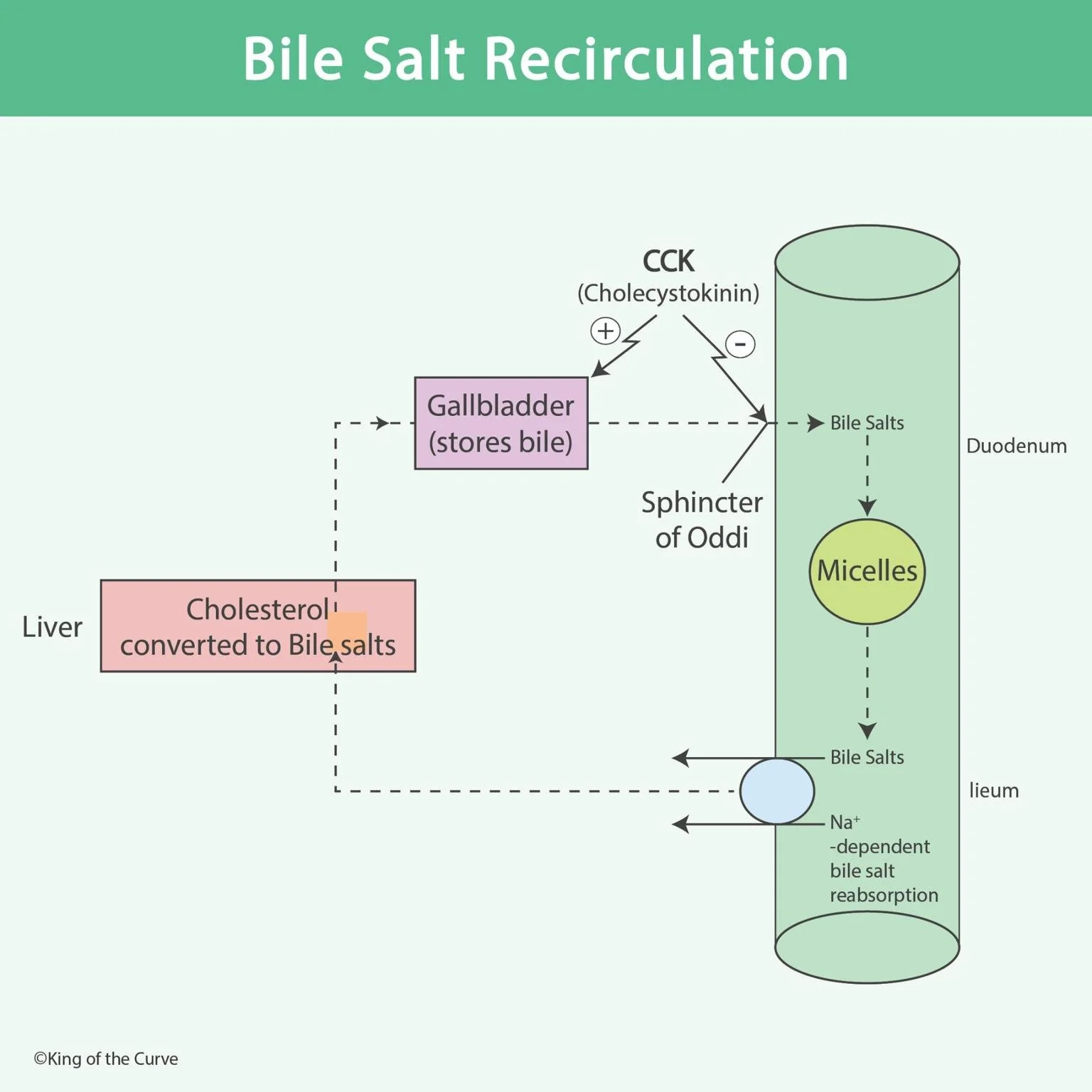🔁 Bile Salt Recirculation: How Your Body Recycles Digestive Gold
The human body is an expert recycler — and nowhere is that more evident than in how it handles bile salts. These critical compounds help break down fats, and instead of wasting them, your body recycles them with remarkable efficiency. This process is known as enterohepatic circulation, or more simply, bile salt recirculation.
🧪 What Are Bile Salts?
Bile salts are derivatives of cholesterol, produced in the liver and stored in the gallbladder. They play a vital role in the digestion and absorption of fats by emulsifying them into smaller droplets, forming micelles in the duodenum, which allows for efficient fat absorption.
🔄 The Bile Salt Recirculation Process
Here’s a step-by-step breakdown based on the diagram:
1. Cholesterol Conversion in the Liver
The liver converts cholesterol into bile salts.
These bile salts are secreted or sent to the gallbladder for storage.
2. Storage in the Gallbladder
The gallbladder stores bile until food enters the small intestine.
The hormone CCK (cholecystokinin) is released when fat is detected in the duodenum.
CCK stimulates gallbladder contraction.
CCK also relaxes the sphincter of Oddi, allowing bile to flow into the small intestine.
3. Emulsification in the Duodenum
Bile salts are released into the duodenum.
They help emulsify fats, forming micelles, which enable fat absorption.
4. Reabsorption in the Ileum
About 95% of bile salts are reabsorbed in the ileum via Na⁺-dependent bile salt transporters.
5. Return to the Liver
The reabsorbed bile salts return to the liver via the portal circulation for reuse.
This efficient recycling can happen 6–10 times a day, minimizing the need for constant bile salt production.
🧠 Why Is This Important?
Understanding bile salt recirculation is essential because:
It helps conserve energy and resources.
Disruption (e.g., in Crohn's disease, ileal resection, or bile acid malabsorption) can lead to fat malabsorption, diarrhea, and vitamin deficiencies.
Certain medications like bile acid sequestrants exploit this process to lower cholesterol.
🩺 Clinical Relevance
Gallstones: Imbalance in bile composition can lead to stone formation.
Cholestasis: When bile flow is impaired, toxins and cholesterol may accumulate.
Cholesterol-lowering therapy: Interrupting bile acid reabsorption can help reduce cholesterol levels.
✅ Summary
The bile salt recirculation system is a finely tuned, efficient feedback loop that ensures your body gets the most out of its cholesterol and fat digestion processes. It underscores the brilliance of human physiology — waste not, want not!
Frequently Asked Questions (FAQs)
-
Aim for 4-6 focused hours, ensuring you incorporate breaks to avoid burnout.
-
Practice mindfulness techniques, take practice exams under realistic conditions, and maintain a balanced lifestyle.
-
Set short-term goals, seek support from mentors, and reward yourself for small achievements.
-
Regular exercise improves focus, reduces stress, and enhances overall mental clarity.
-
KOTC offers personalized learning tools, gamification features, and adaptive question banks to help students stay on track without burnout.


